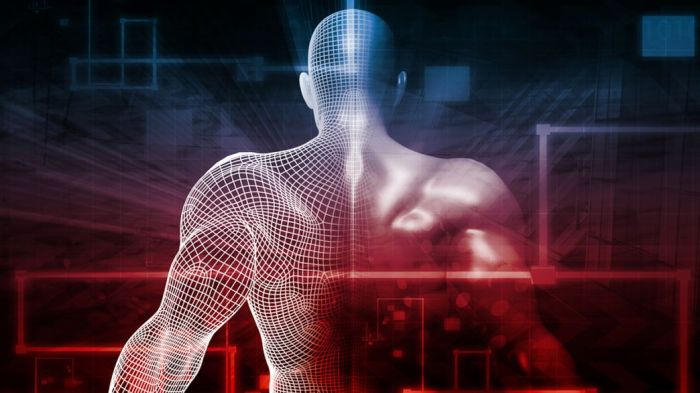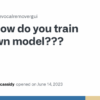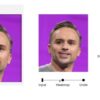Death clock app uses AI to predict your death date, sparking a whirlwind of intrigue and anxiety. This app promises to reveal a future date, based on your personal data, but how accurate are these predictions? Will it be a chilling tool for morbid curiosity, or a helpful tool for life planning? This exploration dives into the technology, the ethical considerations, and the potential impact on society.
The app likely collects a range of data, from your medical history to lifestyle choices, processed through complex algorithms to arrive at a prediction. Different apps may use various methods, from genetic predispositions to daily habits, and this blog will examine the different approaches, the limitations of the technology, and the potential for error.
Introduction to the App
A “death clock app” is a mobile application designed to estimate a user’s remaining lifespan. These apps typically leverage various data points, often combined with AI algorithms, to generate a predicted death date. While the concept is intriguing, it’s crucial to understand these predictions are estimates, not definitive diagnoses. The accuracy and reliability of these estimations remain a subject of ongoing debate.The general premise of using AI to predict death dates is based on the idea that certain factors can correlate with mortality.
These factors, which are inputted by the user, are analyzed by the AI, and then an estimate of the remaining lifespan is calculated. It’s important to remember that these predictions are not based on a definitive understanding of the complexities of human life and health, but on observed correlations.
Core Functionality
These apps collect user-provided data, which can include age, genetic information (if available), lifestyle choices (diet, exercise, smoking habits), medical history, and more. This data is then processed by the AI to create a personalized prediction. The user interface is generally straightforward, presenting the calculated prediction in a clear and accessible format. Common elements include a display of the predicted death date, an explanation of the factors considered in the prediction, and perhaps a section for adjusting or updating the inputted data.
User Interface Elements
The typical user interface of a death clock app usually includes a clear display of the predicted death date. This date is often presented with a degree of uncertainty, reflecting the limitations of the predictive model. Alongside the date, the app might provide an explanation of the factors influencing the prediction. Users might also be given an opportunity to update or adjust their input data.
Furthermore, the app may offer additional information regarding the limitations and accuracy of the predictions.
Types of Death Clock Apps
Different types of death clock apps utilize different approaches to prediction. The accuracy of these approaches remains to be fully validated.
| Type of App | Data Source | Prediction Methodology | Example |
|---|---|---|---|
| Genetics-Based | Family history, genetic testing results | Analysis of genetic predispositions to diseases | Predicting the likelihood of developing a specific disease based on family history |
| Lifestyle-Based | Diet, exercise, smoking habits, sleep patterns | Evaluation of lifestyle choices’ impact on health | Predicting the lifespan based on healthy or unhealthy lifestyle choices. |
| Medical History-Based | Past medical conditions, diagnoses, treatments | Analysis of past health records to assess current health status | Predicting lifespan based on chronic conditions and their management |
| Combined Approach | Combination of genetics, lifestyle, medical history | Integration of multiple data sources for a comprehensive assessment | Predicting lifespan based on a combination of genetic predispositions, lifestyle choices, and past medical records |
Data Collection and Processing Methods: Death Clock App Uses Ai To Predict Your Death Date
Death clock apps, promising a glimpse into the future, rely on complex data collection and processing techniques. However, the accuracy of these predictions is highly questionable, often based on limited and potentially biased data. Understanding the methods used, and their inherent limitations, is crucial to evaluating the claims of such apps.
Data Sources
The foundation of any prediction rests on the quality and breadth of the data. Death clock apps typically collect data from various sources. User input, including lifestyle choices, medical history, and family health, plays a significant role. Health records, when accessible, offer a more comprehensive picture of an individual’s medical history, including diagnoses, treatments, and test results. Wearable devices, such as fitness trackers, provide real-time data on activity levels, sleep patterns, and heart rate, offering a window into physiological conditions.
Data Processing Steps
Raw data, collected from diverse sources, needs to be meticulously processed to extract meaningful information. This involves several steps. First, the data is cleaned and standardized to ensure consistency and accuracy. Missing values are addressed through imputation methods, and outliers are identified and handled appropriately. The next stage often involves feature engineering, where new variables are created from existing data to better capture complex relationships.
Finally, the data is prepared for the prediction algorithm.
Prediction Algorithms
Various algorithms are employed to predict the date of death. Machine learning algorithms, such as regression models and decision trees, are frequently used. For instance, a regression model might analyze the relationship between lifestyle factors and mortality rates in a population. Decision trees can identify specific patterns and thresholds that lead to different mortality outcomes. However, these algorithms are only as good as the data they are trained on.
Inaccurate or incomplete data can lead to unreliable predictions. Furthermore, these algorithms do not account for unforeseen circumstances, like sudden illnesses or accidents. A common example is predicting the lifespan of a person with a specific type of cancer. While the algorithm may use factors like the stage of the cancer and the patient’s response to treatment, it can’t anticipate unforeseen complications or advancements in treatment.
So, this death clock app using AI to predict your death date is getting a lot of attention, right? While pondering the app’s accuracy, I was also watching some livestreams of Borderlands 3, specifically focusing on the problems with the Calypso Twins. This particular livestream highlighted some interesting issues with the villains’ behavior. Ultimately, it got me thinking – if AI can predict our demise, maybe we should focus less on the uncertain future and more on enjoying the present, like blasting some aliens in Borderlands 3!
A more sophisticated approach would need to include a wider range of variables and potentially incorporate more advanced machine learning techniques.
Limitations and Biases
Algorithms, however complex, have inherent limitations. They can only predict based on the data they are trained on. If the data is biased, the predictions will also be biased. For instance, if the data primarily represents a particular demographic or socioeconomic group, the predictions may not be accurate for other groups.
Table: Data Collection Methods and Potential Biases
| Data Collection Method | Potential Biases |
|---|---|
| User Input | Recall bias, inaccurate reporting, social desirability bias, omission of important details. |
| Health Records | Availability of records, incomplete records, selection bias in patients’ access to care, variations in record-keeping standards. |
| Wearable Data | Self-reporting inaccuracies, non-compliance, and limited data scope, data privacy concerns, biases in the population using the device. |
Accuracy and Reliability of Predictions
Predicting the precise date of death remains a significant challenge, even with the advancement of AI. While AI can analyze vast datasets and identify patterns, it’s crucial to understand the limitations and potential errors inherent in such predictions. This analysis delves into the scientific basis, compares different prediction methods, and highlights the factors impacting accuracy. A critical understanding of these factors is essential for users to approach the information provided by the app with appropriate perspective.The inherent complexity of biological systems and the multitude of influencing factors make precise prediction nearly impossible.
While AI can identify correlations and trends, these do not necessarily equate to causation. The app’s aim is to offer insights and stimulate reflection rather than provide definitive answers.
Scientific Basis for Prediction
AI models used in death prediction often rely on statistical correlations between various factors and mortality. These factors might include age, health history, lifestyle choices, and genetic predispositions. The algorithms identify patterns within the data, enabling predictions. However, it’s vital to remember that these are statistical correlations, not deterministic equations.
Comparison of Prediction Methods
Various AI models, from machine learning algorithms to deep learning networks, are employed for death prediction. Each method has strengths and weaknesses. Methods relying on a limited dataset may offer less accurate predictions compared to models trained on extensive and diverse data.
Limitations of AI in Prediction
AI predictions are inherently limited by the incomplete nature of the data and the inherent unpredictability of human biology. Unforeseen events, such as accidents or sudden illnesses, can significantly alter the predicted trajectory. The complex interplay of genetic, environmental, and lifestyle factors cannot be fully captured in any current AI model.
Factors Influencing Prediction Accuracy
The accuracy of predictions is significantly impacted by several factors. The quality and completeness of the input data play a crucial role. Incomplete or inaccurate medical records, lifestyle details, or genetic information can lead to inaccurate or unreliable predictions. Furthermore, the evolving nature of medical knowledge and treatment options can also influence the accuracy of these predictions.
Table of Potential Sources of Error
| Source of Error | Description |
|---|---|
| Incomplete Data | Missing or inaccurate information regarding medical history, lifestyle, and genetic predispositions. |
| Unforeseen Events | Unexpected occurrences such as accidents, sudden illnesses, or changes in health status. |
| Model Limitations | Inability of the AI model to capture all the complex interactions of biological systems. |
| Bias in Data | If the training data reflects existing societal biases, the model might generate predictions that are not representative of the general population. |
| Data Collection Methods | Inconsistencies or flaws in the methods used to gather the data can also contribute to prediction inaccuracies. |
Ethical Considerations

The allure of knowing a potential future date can be powerful, but the prospect of an AI predicting death raises profound ethical questions. Such a tool, while potentially offering insights, carries significant implications for individual well-being, societal norms, and the very nature of human existence. Carefully considering these ethical dimensions is paramount to responsible development and deployment of this technology.
Potential Biases in Data
Data used to train the AI model for death prediction is inherently susceptible to biases. Historical health data, socioeconomic factors, and even geographical location can influence the model’s predictions. For example, if the dataset predominantly includes data from a specific demographic group, the AI might inadvertently favor or disadvantage other groups, leading to inaccurate or unfair predictions. This bias can perpetuate existing societal inequalities and create further disparities in access to healthcare and support systems.
While some apps use AI to predict your death date, it’s definitely a fascinating concept. However, the recent Corsair One gaming PC announce release, detailed in corsair one gaming pc announce release , is a much more tangible, and less speculative, technological advancement. Regardless of the AI predictions, it’s important to remember these apps are just tools and not guarantees.
The death clock app’s predictions are still very much theoretical.
Recognizing and mitigating these biases is crucial to ensure fairness and equity in the predictions.
Impact on Mental Well-being
The prospect of a predicted death date can significantly impact an individual’s mental well-being. Anxiety, depression, and feelings of helplessness are potential consequences. The pressure of accepting a predicted date, regardless of its accuracy, can be immense. Individuals might experience heightened stress, altered decision-making processes, and a shift in their priorities. Furthermore, the emotional toll on family members and loved ones could be equally substantial.
Providing robust psychological support alongside the prediction tool is essential to minimize these negative impacts.
Misuse of the Technology
The technology, while aiming to offer insights, could be misused in various ways. Insurance companies, for instance, might use the predictions to adjust premiums, potentially creating unfair or discriminatory practices. Furthermore, individuals might use the predictions to make impulsive or irreversible life choices without adequate consideration. Misuse can lead to financial exploitation, social discrimination, and a loss of personal autonomy.
Careful regulation and ethical guidelines are vital to prevent such detrimental outcomes.
Ethical Dilemmas Summary
| Ethical Dilemma | Explanation |
|---|---|
| Data Bias | AI models trained on biased data may produce inaccurate or unfair predictions for specific demographics. |
| Mental Impact | Receiving a predicted death date can trigger negative emotional responses, impacting mental health and well-being. |
| Potential for Misuse | Insurance companies or individuals might exploit predictions for financial gain or to make harmful decisions. |
| Privacy Concerns | Data collection and use raise concerns about personal privacy and data security. |
| Responsibility | Determining who is accountable for the predictions and their potential consequences is a critical ethical issue. |
Impact on Society and Healthcare
The Death Clock app, while raising intriguing possibilities, also presents complex societal and healthcare implications. Understanding how this technology might influence individual choices and reshape healthcare practices is crucial for responsible development and deployment. It’s not just about predicting a date; it’s about how we use that knowledge to live fuller, healthier lives.
Potential Effects on Healthcare Practices
The ability to predict mortality, however tentatively, could revolutionize preventative care. Healthcare providers might focus more on proactive interventions, tailoring strategies to individuals based on predicted timelines. This could lead to personalized treatment plans, encouraging patients to engage in healthier lifestyles and potentially reducing hospital readmissions. Early detection of potential health risks could also lead to earlier interventions and better treatment outcomes.
So, this death clock app uses AI to predict your death date. It’s certainly a fascinating concept, but honestly, I’m more interested in what Instagram is doing these days. They’ve recently given their logo a fresh new look, with a new typeface and a brighter logo gradient – check out the details on instagram gets a new typeface and a brighter logo gradient.
Still, while I appreciate the visual updates, I’m just not sure how much I trust a death prediction app, no matter how sophisticated the AI is.
Social Impact of Planning with Death Dates
Knowing a potential death date could have profound social implications. It could encourage individuals to prioritize relationships, experiences, and personal goals, possibly leading to a more meaningful life. However, the psychological impact of facing such a prediction warrants careful consideration. The potential for anxiety, depression, or a sense of fatalism cannot be ignored. Support systems for individuals dealing with these predictions would need to be in place.
Influence on Personal Health Decisions
The app’s predictions might influence personal decisions regarding health and lifestyle. Individuals might be motivated to adopt healthier habits, such as a more balanced diet, increased exercise, and improved sleep routines, to potentially extend their lifespan. Conversely, the knowledge of a predicted death date could lead to a sense of hopelessness, potentially hindering healthy behaviors.
Beneficial Uses in Healthcare Settings
The Death Clock app, if developed ethically and responsibly, could have numerous benefits. For example, it could help patients and their families make informed decisions about end-of-life care. Knowing a predicted timeframe might allow for better estate planning and the allocation of resources. Additionally, it could prompt earlier discussions about advanced directives, ensuring that patients’ wishes are respected.
Healthcare professionals could use the data to optimize resource allocation, anticipate potential needs, and improve the quality of end-of-life care. For example, hospitals could anticipate staffing needs and make adjustments accordingly, reducing potential strain during peak periods.
Potential Social Implications
| Potential Positive Social Implications | Potential Negative Social Implications |
|---|---|
| Improved quality of life through proactive health management. | Increased anxiety and stress related to the predicted death date. |
| Enhanced end-of-life care planning and decision-making. | Potential for discrimination based on predicted lifespan. |
| Increased motivation for healthy lifestyle changes. | Erosion of trust in healthcare systems due to perceived inaccuracies. |
| Optimizing resource allocation in healthcare settings. | Potential for exploitation or manipulation based on predicted lifespan. |
| Improved communication and support systems for patients and families. | Increased societal focus on mortality rather than life. |
Illustrative Examples
The concept of a death clock app, while intriguing, raises profound questions about the psychological and societal impact of predicting a finite lifespan. This section explores hypothetical scenarios and potential reactions to such predictions, highlighting both the potential benefits and pitfalls of such a tool.This exploration will show how individuals might utilize a death clock app for end-of-life planning, but also discuss the possible psychological responses to such a tool.
Hypothetical User Scenario
A 45-year-old user, Sarah, downloads a death clock app. The app’s prediction suggests a high probability of death within the next 15 years due to cardiovascular disease, a family history she is aware of. This knowledge could profoundly affect her choices.
Potential Psychological Impacts
The psychological impact of a death clock app is multifaceted. Some users might experience anxiety, depression, or a sense of hopelessness. Others might find the prediction motivating, prompting them to make positive lifestyle changes. The app’s predictions can trigger a range of emotional responses, from acceptance to fear.
Reactions to Predictions
Users’ reactions to the predictions vary greatly. Some individuals might feel empowered to make necessary lifestyle changes, focusing on preventative care and quality of life. Others might become overwhelmed, experiencing denial, anger, or even withdrawal. The app’s predictions could trigger reflection on their life’s choices and the importance of relationships. It is crucial to understand that individual responses depend heavily on personality, support systems, and existing beliefs.
End-of-Life Planning
The app’s predictions could also facilitate proactive end-of-life planning. Sarah, for instance, might use the prediction to:
- Update her will and estate plan.
- Arrange for caregiving or financial support.
- Spend quality time with loved ones.
- Explore options for medical treatments.
These actions highlight how such an app can act as a catalyst for making crucial decisions and preparations.
User Interface Illustration
Imagine a clean, minimalist interface with a large, central display showing Sarah’s predicted lifespan in a visually appealing format. The interface displays not only the predicted date but also key factors contributing to the prediction. For example, age, health history, lifestyle choices, and genetic predispositions are shown in the app. The prediction also highlights areas for improvement, like dietary changes, exercise routines, and preventative screenings.
A prominent ‘Support’ button links to resources, offering mental health support and grief counseling. The color scheme is calming, avoiding harsh colors. The app also includes a space for notes, allowing users to document personal reflections, goals, or plans.
Alternatives and Complementary Approaches

Beyond the allure of precise predictions, appreciating the multifaceted nature of life’s end necessitates exploration of alternative and complementary approaches to end-of-life planning. A holistic perspective acknowledges that the human experience transcends numerical estimations, encompassing emotional, spiritual, and practical considerations. These alternative methods offer a broader framework for individuals to navigate this significant life transition.
Alternative Methods for End-of-Life Planning
Different approaches provide valuable support for navigating the complexities of end-of-life planning. These methods extend beyond the scope of AI-driven predictions, offering diverse perspectives and practical tools.
- Advance directives and wills: These legal documents Artikel preferences for healthcare and financial matters, ensuring wishes are respected in the event of incapacitation or death. These instruments empower individuals to maintain control over their decisions, aligning them with their values and goals. Examples include living wills, durable powers of attorney, and last wills and testaments. Proper legal counsel is essential for crafting these documents.
- Legacy planning: This encompasses creating a lasting impact beyond one’s physical presence. It can involve sharing stories, mentoring others, contributing to causes, or leaving a charitable bequest. This method emphasizes the continuity of values and the significance of human connection.
- Spiritual guidance and counseling: Exploring personal beliefs and values concerning death and the afterlife can provide solace and meaning. Seeking support from spiritual advisors, counselors, or religious leaders can facilitate a deeper understanding of personal values, allowing individuals to confront the inevitable with a sense of peace and acceptance.
- Relationship maintenance and reconciliation: Addressing unresolved conflicts and nurturing meaningful connections before passing can alleviate emotional burdens for loved ones. Open communication and forgiveness can create a more peaceful transition.
Resources for End-of-Life Planning
Numerous resources offer practical support and guidance for individuals seeking assistance in planning for the end of life.
- Hospice organizations: These organizations provide comprehensive support for individuals facing terminal illnesses, encompassing physical, emotional, and spiritual care. They offer a network of professionals who aid in creating a dignified and peaceful transition. Support groups and bereavement services are often available.
- Grief counselors and therapists: These professionals offer support and guidance for individuals and families navigating the emotional challenges associated with loss and grief. They provide a safe space for processing emotions and developing coping mechanisms.
- Legal professionals specializing in estate planning: Attorneys specializing in estate planning can assist in creating legally sound documents, ensuring that wishes are accurately reflected and protected. This includes wills, trusts, and advance directives.
- Online resources and support groups: Numerous websites and online communities provide information, support, and connections for individuals facing end-of-life issues. These resources offer a valuable source of shared experiences and insights.
Complementary Approaches to AI-Based Predictions
AI predictions can be a starting point, but a holistic approach to end-of-life planning is vital. AI can provide potential insights, but should not be the sole determinant. Integrating AI predictions with other approaches can lead to a more comprehensive and fulfilling experience.
Utilizing Alternatives for Better Planning, Death clock app uses ai to predict your death date
Integrating these alternatives into end-of-life planning allows for a more comprehensive and personal approach. Combining AI-driven insights with these methods can yield a more balanced and meaningful experience. By engaging with these diverse options, individuals can build a framework that harmonizes personal values, emotional needs, and practical considerations.
Comparison of Approaches
| Aspect | AI-Based Prediction | Alternative Methods |
|---|---|---|
| Focus | Predicting a specific date | Creating a plan encompassing values, relationships, and legacy |
| Perspective | Data-driven | Holistic and personal |
| Outcome | Potential insight into time | Meaningful and fulfilling experiences for individuals and loved ones |
| Support | Statistical analysis | Emotional support, legal guidance, spiritual exploration |
Final Summary
Ultimately, the death clock app uses AI to predict your death date raises profound questions about the ethics of prediction, the impact on mental well-being, and the potential for misuse. While the technology may offer some insight into potential health risks, it’s crucial to approach these predictions with a critical eye and consider alternative methods for end-of-life planning. The future of this technology remains to be seen, but its implications are undeniable.






